

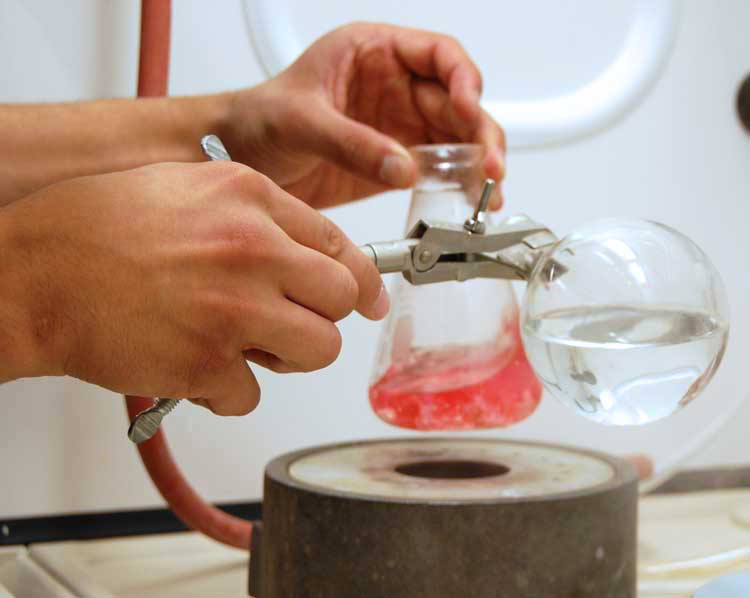
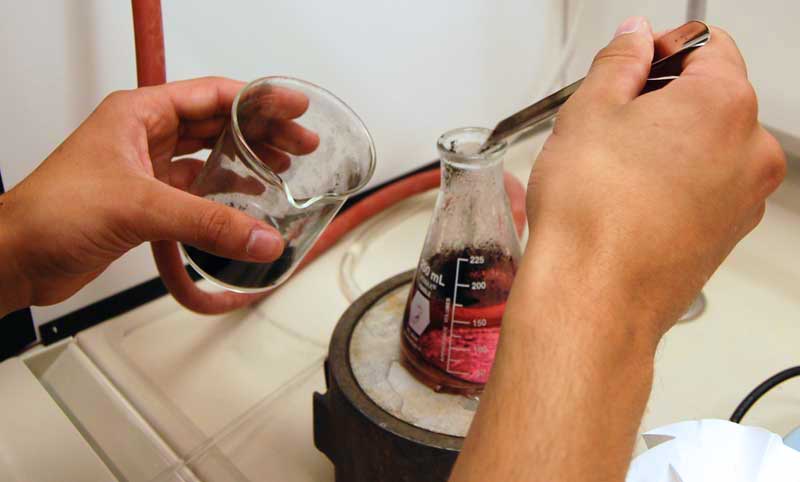
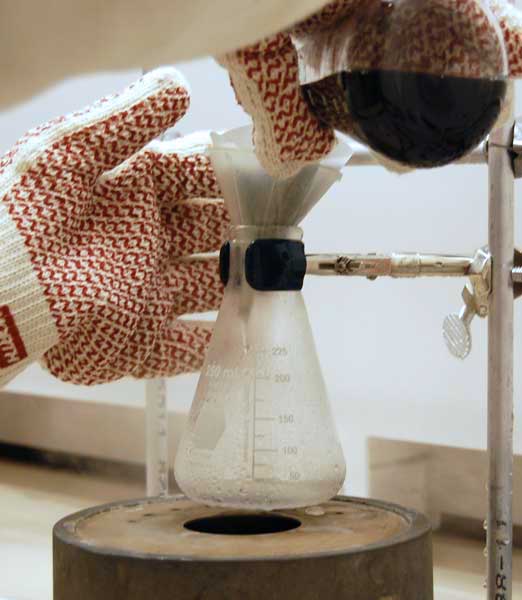
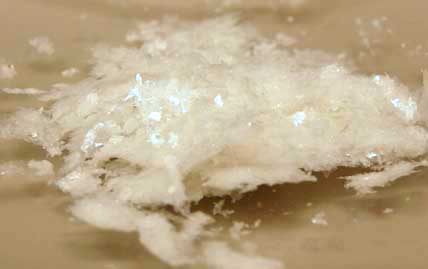
Goal: The goal of this week's lab is to recrystallize the benzoic acid you isolated last week. You will also determine the % recovery for the recrystallization you carry out.
PROCEDURE:
1) Set a small amount of the impure benzoic acid aside and keep it until next week. You will compare the melting point of this impure sample to the benzoic acid recovered from recrystallization.
2) Weigh the impure benzoic acid crystals obtained last week using the analytical balance and place them in a 250 mL Erlenmeyer flask. Weight of impure benzoic acid ____________g.
3) Bring approximately 200 mL of water to a boil using the 250 mL round bottom flask fitted with a clamp as a handle using the heating mantle (pages 150-152, OCLSM) which is plugged into the variac. DO NOT PLUG THE HEATING MANTLE DIRECTLY INTO THE OUTLET. Be certain to add boiling stones (page 144, OCLSM) to the flask. Slowly add the boiling water to the benzoic acid crystals until they dissolve. DO NOT ADD MORE WATER THAN NECESSARY. Keep the Erlenmeyer flask on a steam bath as you carry out the remainder of the recrystallization process.
Why?
Heating mantle and variac.
Addition of boiling water to impure crystals.
4) Add a small amount of charcoal to the solution (page 113, OCLSM) and gravity filter (pages 106-109, OCLSM) using a funnel fitted with fluted filter paper (pages 117-118, OCLSM). Collect the filtrate in a 250 mL Erlenmeyer flask. The charcoal should remove all of the colored impurities. If color persists, repeat this process. Note: Depending on how pink your crystals are, you may not need to add any charcoal. The lattice formation of the benzoic acid will usually prevent the larger colored molecules from entering. Observations: Why does charcoal adsorb colored molecules? Why is using too much charcoal not a good idea? Why do we use gravity filtration instead of the seemingly easier process of vacuum (suction) filtration?
Addition of charcoal.
Solution after the addition of charcoal.
Removal of charcoal via gravity filtration.
5) Remove the flask from the steam bath and allow it to cool slowly on the window sill. This assures slow nucleation and the formation of large, pure crystals. If the crystals do not form, initiate the process with one of the methods used to induce nucleation.
6) Collect the solid crystals by vacuum filtration. Transfer the product to a watch glass and allow it to dry until the next lab. Observations: Comment on the size, shape, and color of your crystals.
7) At the beginning of the next period, weigh your recrystallized benzoic acid. Use this value to determine the % recovery for your recrystallization using the following formula:
![]()
| CHEMICAL INFORMATION | |
| Name | Structure (2-D) |
| benzoic acid | 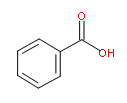 |